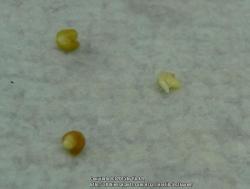http://www.britannica.com/EBch...
The Encyclopedia Britannica hints that there are many kinds of dormancy and combinations of conditions that break it or enforce it.
Inhibition by light is found in chive, garlic, and several other species of the lily family, jimsonweed, fennel flower (Nigella), Phacelia, Nemophila, and pigweed (Amaranthus).
My guess is that the evolutionary "purpose" of dormancy is to keep most seeds from sprouting unless the conditions are likely to be favorable to the seedling. That, and also to keep SOME seeds dormant for next year no matter HOW favorable conditions seem right now.
One thing that surprises me is how seeds manage to stay intact, viable and undigested during
multiple years underground, moist and surrounded by microbes hungry for organic food. Those seed coats do very well to defy mold, fungi, worms, insects and bacteria!
It certainly mocks my attempts to maximize seed viability by worrying about the difference between 50% RH and 15% RH inside cool, dark Ziplocs!!
